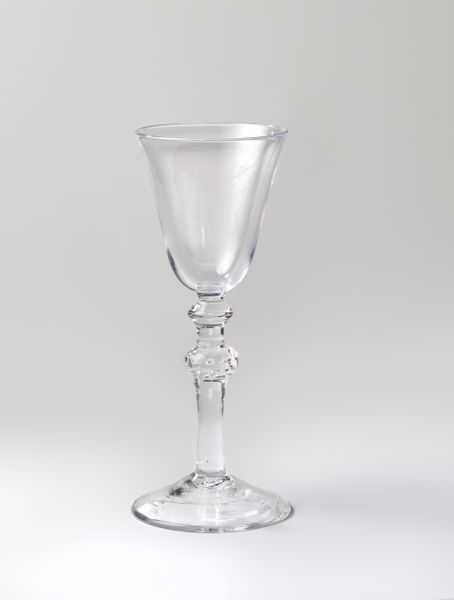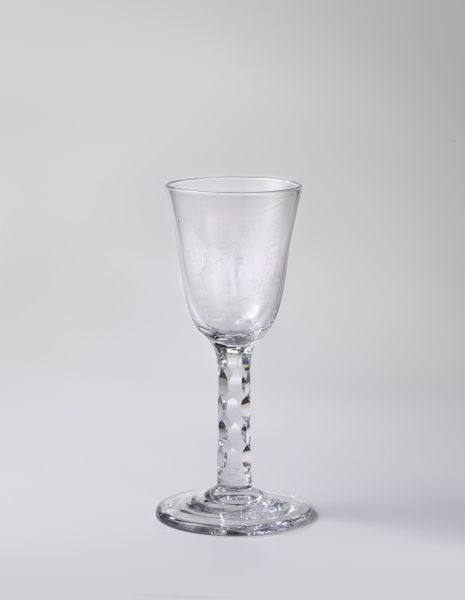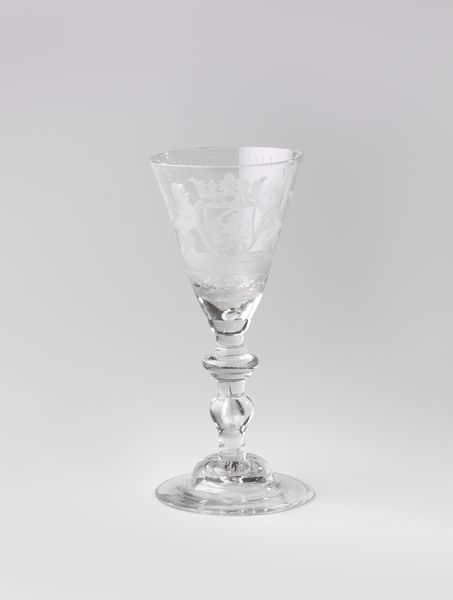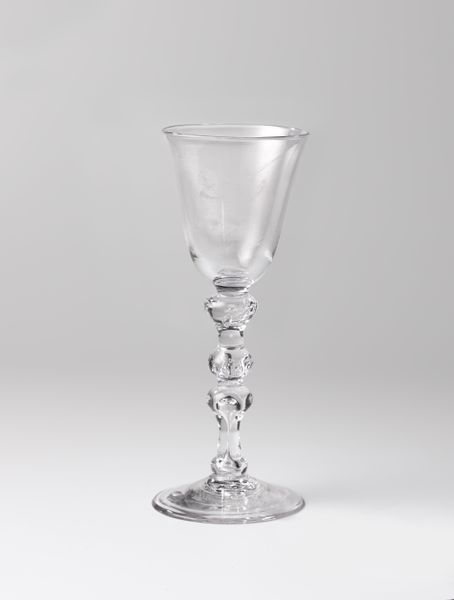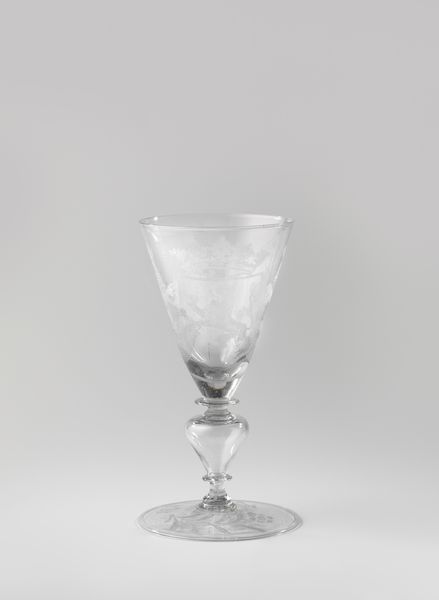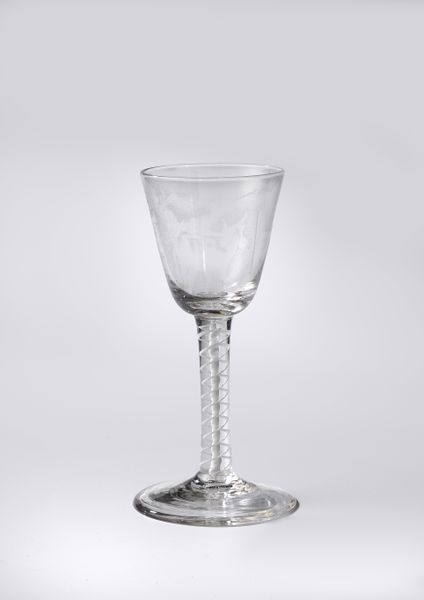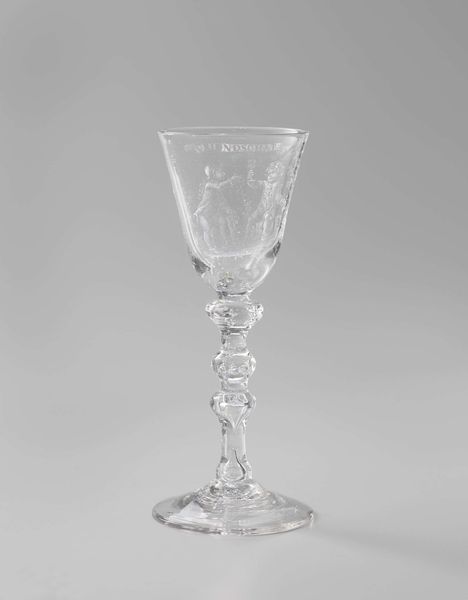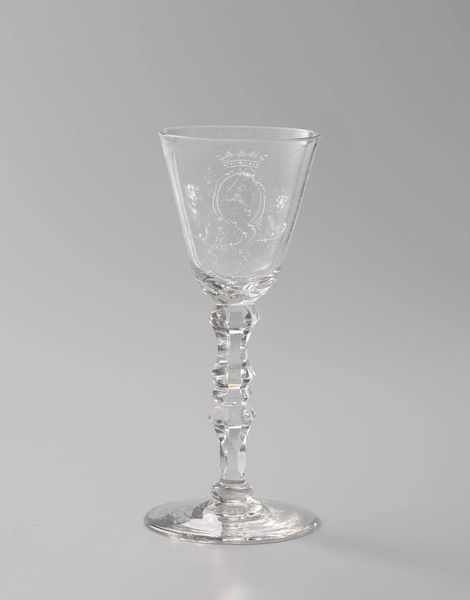
metal, glass
#
metal
#
glass
#
rococo
Dimensions: height 22 cm, diameter 9 cm
Copyright: Rijks Museum: Open Domain
Editor: Here we have a wine glass from around 1760 to 1780, currently attributed to an anonymous artist. The material is primarily glass, with some metal components in the stem. It strikes me as incredibly ornate for something that is essentially utilitarian. What are your thoughts about it? Curator: The opulence is certainly noteworthy. I'm drawn to the division of labor inherent in its creation. The glassblower, the metalworker—they likely belonged to different guilds, representing specialized craft traditions. Who mined the raw materials? Who traded them? These networks fueled the Rococo style. Editor: It’s interesting that you bring up those types of questions about production. Can we really determine much about labour based solely on the art object itself? Curator: I think so. Notice the facets cut into the stem. Each one is evidence of a skilled hand manipulating the material. And those metal accents – how were they joined to the glass? Examining the methods, the making process, opens up questions of who profited, who toiled, and how materials shaped aesthetic values. Think of the guilds and how those traditions reflect the economic landscape of the time. The elaborate design probably speaks volumes about the inequalities in society at the time. Editor: I hadn't considered how deeply the supply chain could affect something as simple as a wine glass. The relationship of the raw materials used to production to this aesthetic we see here! Curator: Exactly. The glass speaks, if you consider the context of its making. We might learn something from looking closer. Editor: Definitely a new way to appreciate art and social inequality.
Comments
No comments
Be the first to comment and join the conversation on the ultimate creative platform.

